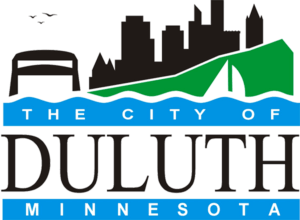Video by joefairbanks.com
Animals First - Always
At Duluth’s Lake Superior Zoo, every day is a thrilling adventure. For instance, at any given moment, the eerily human-sounding voice of Korbel - a 47-year-old double yellow headed Amazon parrot – loudly makes her presence known. Guests can also experience the hilarious antics of primates, the wild roars of bears and big cats, and the adorable curiosity of a two-toed sloth.
Here at the Zoo, the care and well-being of the animals is a top priority, along with educating the public about conservation efforts. Its youthful CEO, Haley Cope, at just 30 years old, contributes a fresh infusion of innovative ideas that have helped revitalize this well-loved Duluth landmark.
“I want the Zoo to be a space of education and awareness, where individuals and families can learn more about animals, endangered species, and how they can be good stewards of the environment and nature in general,” Cope explained of the Zoo’s mission.
“Zoos are so different than they were even 30 years ago,” she added. “Back then, they were more for entertainment. The focus today is on conservation and ensuring that endangered animals have a fighting chance.”
This includes both indoor and outdoor exhibits, along with the traveling “Zoomobile,” which brings the Lake Superior Zoo’s educational offerings and message of conservation to group homes, schools, and long-term care facilities across the region.
There’s no doubt about it: Today’s Lake Superior Zoo is a landmark Duluthians can be proud of. “Duluth is very lucky to have the Lake Superior Zoo,” Cope said. “Here, you can see animals from both Minnesota and around the world.”
History
While today, it educates thousands of visitors a year and features a plethora of animals from around the globe, the Zoo had very modest beginnings. It was founded in 1923 as a way for local resident Bert Onsgard to safely house a fawn named Billie, and share her with the community. Today, the Zoo is home to 350 animals, across 140 species.
One fact that many people don’t know is that none of the animals at the Lake Superior Zoo were removed from their native habitats. “All of our animals were either born in protective care or are rescues,” Cope shared. “And, some of our parrots used to be pets. Some animals were orphans, and some faced euthanasia.”
This includes fan favorites Tundra and Banks – brown bears who were orphaned when their mother was hit by a car in Alaska. Additionally, the Zoo’s resident cougars, Olympia and Tacoma, were also orphaned when their mother was illegally shot and killed.
New Initiatives
Cope began working at the Zoo as Director of Marketing three years ago. Since her promotion to CEO, the Zoo has fought back against many challenges – both logistical and financial - posed by COVID-19.
And, local residents will no doubt remember the flood of 2012 and how it devastated the Zoo. It has taken many years to bounce back from that tragic event, where several animals sadly perished, and many exhibits were destroyed, at Mother Nature’s hand.
Cope has responded to these challenges in several ways: by revisiting the Zoo’s mission; by applying significant resources towards the infrastructure of exhibits and animal safety; and by offering fresh content and experiences for visitors.
For instance, a brand-new $4M “Bear Country” exhibit will be completed soon, which will house a variety of species of bears. A new, licensed childcare facility, the Lake Superior Zoo School, is a new, on-site preschool for children aged three to five. “Its mission is to provide close-up experiences with animals that create connections with wildlife and inspire actions to conservation, both here and around the world,” Cope said.
Additionally, Cope has big plans to revitalize the Zoo’s main building. “We are ready to renovate and start fresh,” she said. Cope has dreams of incorporating indoor, parallel play – where kids could safely play amongst the animal exhibits. More summer camps will be added in the future, as well.
And, while families with children are the Zoo’s biggest demographic, Cope hopes to attract individuals and couples without children, too. Future plans include the addition of after-hours events, which could be a fun option for date night, or a solo adult adventure.
“Our biggest demographic is always going to be families,” she noted, “But as we look towards the future, we want to be a place for all – all ages and everyone in our community. We want everyone to feel welcome.”
Help Wanted
Cope certainly can’t complete all of these ambitious projects alone. In addition to the Zoo’s 20-25 full-time, year-round staff, whom she described as “so dedicated to our mission, and compassionate to the animals,” she implored the Duluth community to continue supporting their Zoo. This can be accomplished in a variety of ways.
“People can support us through membership (which comes with plenty of local, and even nation-wide perks!); by sharing our story on social media; by making donations (either financial or by shopping for our ‘wish list’); volunteering; or even giving us kind words of encouragement,” Cope said. “There is no gift that’s too small. Every gift is meaningful.”
Above all, Cope firmly believes that when we all work together, anything is possible at the Zoo. “We know we can accomplish anything we set out to do with the support of the community, our members, and the region.”

